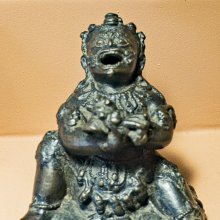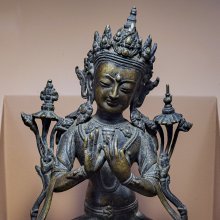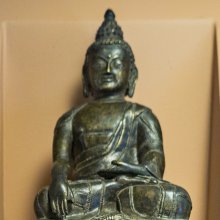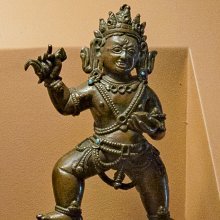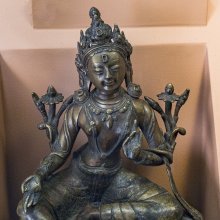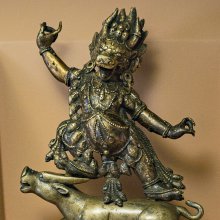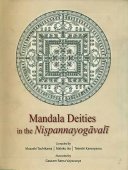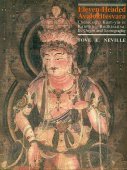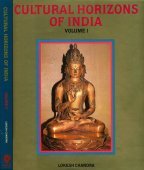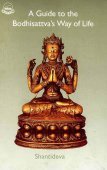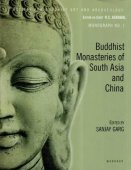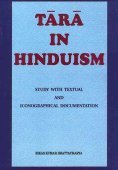Tibet: 2 definitions
Introduction:
Tibet means something in Hinduism, Sanskrit. If you want to know the exact meaning, history, etymology or English translation of this term then check out the descriptions on this page. Add your comment or reference to a book if you want to contribute to this summary article.
Images (photo gallery)
(+190 more images available)
In Hinduism
Shaiva philosophy
Source: Google Books: The Recognition SutrasThe country of Tibet in ancient times used to a Tantrik kingdom, similair to the Kashmir valley, from which originated many Sanskrit scriptures, such as the 11th century Pratyabhijñāhṛdaya.—In the time of Kṣemarāja, Kashmir was a Tantrik kingdom, which means the rulers were (usually) Tantrik initiates who generously patronized the tradition—and therefore indirectly made possible this book! At that time there were many Tantrik kingdoms in the Asian world, such as those of Bali, Champa (coastal Vietnam), Angkor Wat (in Cambodia), and Tibet, and many more in India, Nepal, and what is now Pakistan. Until just a few years ago Nepal was a Tantrik kingdom, and nearby Bhutan is the last of the Tantrik kingdoms existing today.
-
Languages of India and abroad
Nepali dictionary
Source: unoes: Nepali-English DictionaryTibet is another spelling for तिब्बत [tibbata].—n. Tibet (a Chinese autonomous state);
Nepali is the primary language of the Nepalese people counting almost 20 million native speakers. The country of Nepal is situated in the Himalaya mountain range to the north of India.
See also (Relevant definitions)
Starts with: Tibeta, Tibetan, Tibetan Buddhism, Tibetan sea buckthorn, Tibeti, Tibeti-him-kukhura.
Query error!
Full-text (+472): Bhota, Mahabhota, Shantarakshita, Padmasambhava, Tibbata, Atisha, Bon, Zhang Zhung, Trisong Detsen, Jonang, Kailasa, Kailash, Yeshe Tsogyel, Mahayana, Kalacakra, Thirteen Provinces of Tibet, Sinkiang-tibet arnebia, Western Tibet, Central Tibet, Shakya.
Relevant text
Search found 120 books and stories containing Tibet; (plurals include: Tibets). You can also click to the full overview containing English textual excerpts. Below are direct links for the most relevant articles:
Journal of the European Ayurvedic Society (by Inge Wezler)
Other Publications Received (Volume 4) < [Volume 4 (1995)]
On Mercury in Tibetan ‘Precious Pills’ < [Volume 5 (1997)]
Reviews and Notices (Volume 1) < [Volume 1 (1990)]
Tibet (Myth, Religion and History) (by Tsewang Gyalpo Arya)
4. Buddhist renaissance; bsTanpa Phyi dar < [Chapter 7 - Buddhism in Tibet]
5. Buddhist Schools and the Politics of Tibet < [Chapter 7 - Buddhism in Tibet]
The Great Buddhist Emperors of Asia (by Shibani Dutta)
Karandavyuha Sutra (by Mithun Howladar)
Part 2 - Historical Importance of Mantra in Tibet < [Appendix 3 - Six-Syllabled Mantra]
Part 1 - Introduction (Oṃ Maṇi Padme Hūṃ) < [Appendix 3 - Six-Syllabled Mantra]
Part 12 - Origins and Development of [Buddhist] Schools < [Appendix 2 - Buddhist Philosophy]
Bodhisattvacharyavatara (by Andreas Kretschmar)
Text Section 41 < [Khenpo Chöga’s Oral Explanations]
Interview With Khenpo Namdröl < [Introduction Text]
The History of Dzongsar Shedra in East Tibet < [Introduction Text]
Complete works of Swami Abhedananda (by Swami Prajnanananda)
Chapter 10 - Lamaism in Tibet < [Discourse 7 - Thoughts on Sankhya Buddhism and Vedanta]
Preface < [Discourse 7 - Thoughts on Sankhya Buddhism and Vedanta]
Related products
(+3 more products available)
